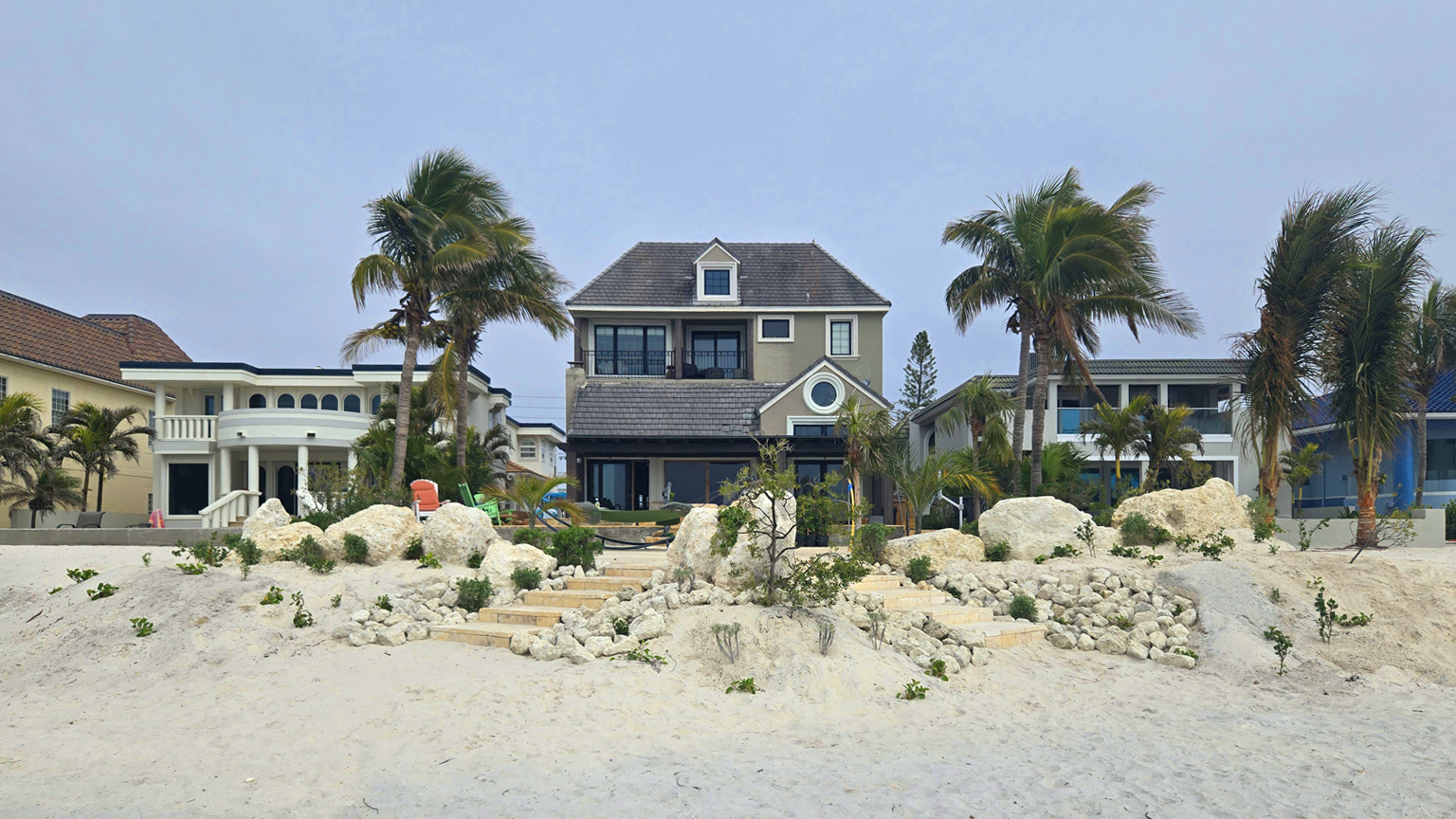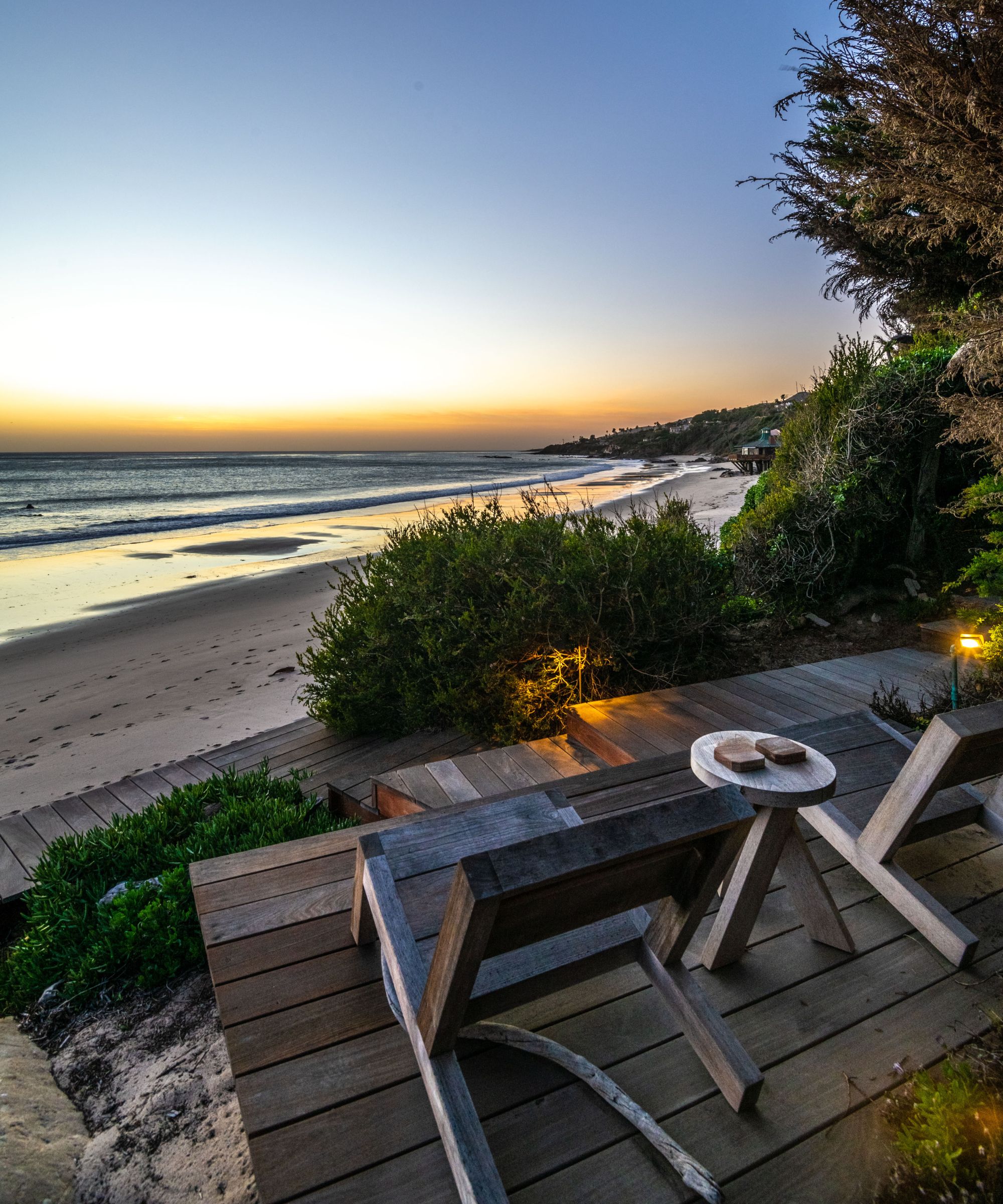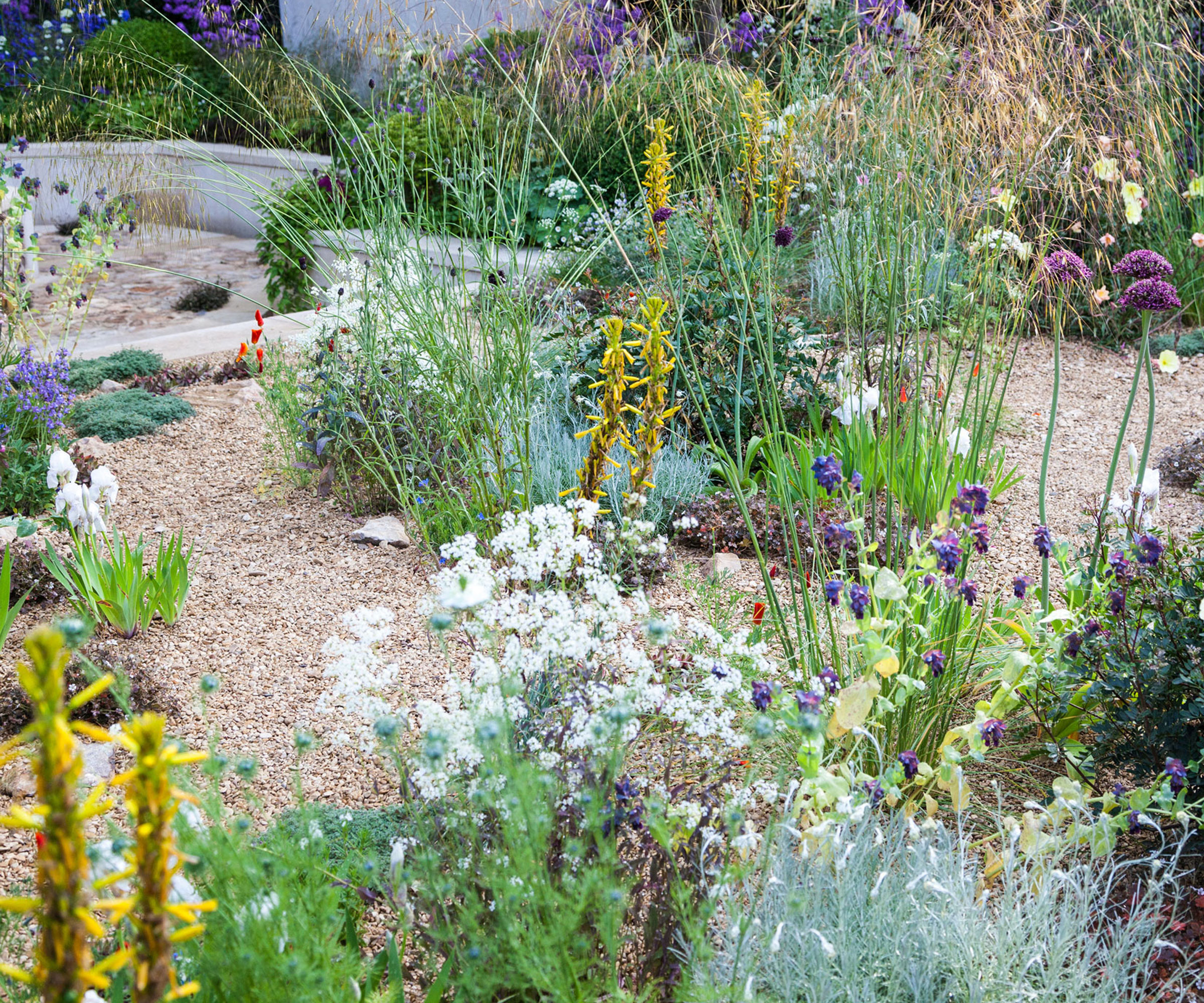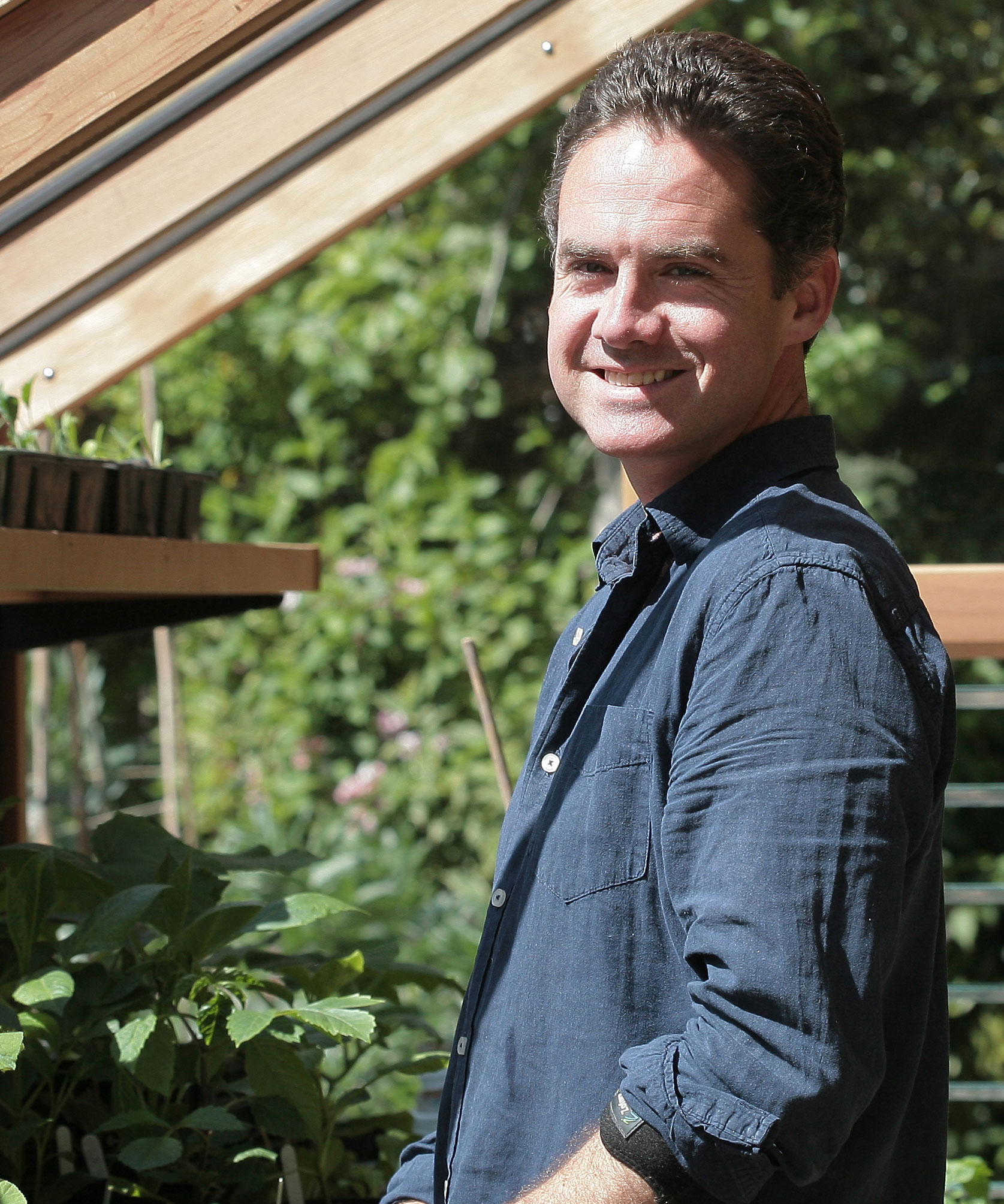Coastal resilience is the next big luxury landscape trend – here’s how designers are responding for 2026
How to blend functional resilience and luxury design in the face of coastal living


Many of us dream of living by the ocean, but with climate change and rising sea temperatures, storms and hurricanes are seemingly becoming more frequent and powerful. What does that mean for gardeners who live on the coast?
Homeowners with coastal gardens are beginning to look more at coastal resilience landscaping and making their yards not just beautiful, but capable of tolerating the worst the weather can throw at them.
Read on to find out how landscape designers are blending functional resilience and luxury coastal garden ideas that can thrive in the face of the coastal challenges of salt spray, storm surges and strong winds.
What is coastal resilience landscaping

The beach or seaside often conjures up happy memories of past vacations or provides a beautiful place to escape or relax, but it can also be a harsh environment and a place of destruction. As a result, gardeners are turning towards coastal resilience landscaping.
This, in short, is the practice of designing and creating gardens and outdoor spaces that can endure the pressures that come with proximity to the ocean, such as salt or hurricane-force winds.
Working with the environment rather than against it, coastal resilience landscaping often looks towards nature-based solutions, such as utilising hardy, native plants and incorporating natural features like dunes, alongside permeable landscaping materials.
When asked what coastal resilience landscaping is and why it is becoming more important, James Grew, owner of the Seacoast Gardener, based in North Hampton, New Hampshire, stated, ‘for us, coastal resilience landscaping is about creating gardens that can recover from salt spray, storm surge, and heavy coastal weather – not just withstand them.
Design expertise in your inbox – from inspiring decorating ideas and beautiful celebrity homes to practical gardening advice and shopping round-ups.
'Along the New Hampshire and southern Maine coast, we care for many oceanfront properties, and last winter we saw first-hand how extreme storms are reshaping the landscape. One nor’easter filled several of our clients’ front yards with ocean water, literally tons of ocean sand and thousands of beach stones. It was a clear reminder that coastal gardens have to be designed with adaptation in mind.’

James is the founder and owner of The Seacoast Gardener, a landscaping company based in North Hampton, New Hampshire. With extensive horticultural experience, James and his team enjoy prioritizing soil health, plant care, and long-term sustainability in the gardens they design and manage.
Planting for coastal resilience landscaping

The often-quoted term ‘right plant, right place’ was popularized by the renowned English gardener Beth Chatto in the 1960s and highlights the importance of considering a plant’s ideal growing conditions when choosing what to plant where.
This is especially true for coastal sites, where plants need to be tough and able to thrive in the extremes of salt spray, strong gales, poor or non-existent soil and often sloping surfaces.
Furthermore, the local climatic conditions will have a bearing on plant choice as the zone 10-11 USDA hardiness rating of Captiva and Sanibel, Florida, is a world away from the New Hampshire zone 6 coastline.
That being said, robust plants such as ornamental grasses and sea hollies (Eryngiums), such as Blue Glitter Sea Holly available from Nature Hills, are widely used due to their wind and salt tolerance.
Florida-based Kiamesha Wray, the founder and owner of Living Spaces Gardening and Living Restorations, says that ‘Opting for a living shoreline rather than a seawall, or cluster planting your trees, are some impactful decisions you can make that will have a positive impact on how a site will fare in a severe weather event’ and that ‘many of the species we use are adapted to this because they already thrive in environments where hurricanes are sometimes a yearly event.’
This is because ‘living shorelines are better able to stabilize erosion and absorb storm surge and trees that are planted with other trees can support each other during high winds.’
On the North Atlantic Seaboard, James recommends utilising ‘salt-tolerant natives and deep-rooted grasses that hold soil and rebound after flooding. Plants like beach plum (Prunus maritima), inkberry holly (Ilex glabra), switchgrass (Panicum virgatum), and little bluestem (Schizachyrium scoparium) do especially well.
'We also use shrubs such as rugosa rose and bayberry for wind and salt protection, and sweet pepperbush or red osier dogwood for wetter areas that occasionally flood.’
As recommended by James and widely used in other garden design styles, including prairie minimalism and drought-tolerant schemes, little bluestem is a hardy perennial grass that remains compact with a final height of 2-3 feet. Tough and adaptable, it will cope with zone 3 and above and very poor soils. You can purchase Little Bluestem Grass from Nature Hills.

Kiamesha Wray is the founder and owner of Living Spaces Gardening, a Florida-based garden design and landscaping company. She is passionate about natural landscaping that utilizes native plants to create resilient ecosystems that support the local environment.
Hardscaping materials for coastal resilience landscaping

Hardscaping materials are the inanimate elements that provide a function in your garden or yard, such as decking, paving, stone and gravel, while still contributing to the overall design. In the light of climate change, homeowners are increasingly turning towards sustainable landscaping materials where possible, but when it comes to coastal resilience landscaping and luxury designs, what should be used and where is especially important.
Weather-resistant and salt-tolerant materials and those that are not prone to rotting are an obvious choice, but permeability (materials that allow water to pass through rather than retaining it) is another key factor, as this can help avoid runoff and localized flooding.
James states, ‘Shell driveways, gravel paths, and stone terraces allow water to percolate naturally, while rain gardens and native buffers slow runoff and protect the shoreline. The goal is to let the land breathe – absorbing, filtering, and recovering – instead of fighting the water.’
Gravel and permeable paving with drainage channels are often stipulated even in inland designs and commonly used where garden drainage is important, as they let water seep back into the ground naturally.
Large boulders can also be used to define areas and provide natural structure in coastal gardens and help dissipate the force of powerful storm surges.
Dunescaping

For properties and backyards that back onto the beach, dunescaping and dune restoration are becoming increasingly popular due to their attractive, protective and ecological benefits. ‘Dune systems not only absorb storm surge energy but are critical habitat for supporting a wide variety of life’ says Kiamesha.
Primarily using sand and gravel rather than soil means plant choice is limited and specimen selection focuses on those that are salt-tolerant coastal natives that will thrive in free-draining, low-nutrient, and wind-swept conditions. When it comes to dune restoration, Kiamesha recommends the ‘trifecta of sea oats, bitter panicum, and beach elder and that morning glory and railroad vine are excellent because of their rapid sprawling growth pattern.'
She goes on to report that ‘studies support bitter panicum in particular as a lead succession species which will support more rapid vegetation regeneration, because the root systems established aid other species to gain a foothold.’
A very salt-tolerant and coastal native of the Americas is sea oats, Uniola paniculata. This spreads through underground rhizomes, which, along with their deep root systems, help stabilize the sand and prevent erosion as well as provide food and habitat for wildlife. Growing from 3-6 feet tall, its oat-like seed heads tower above the foliage on arching stems.
A climbing plant that thrives on neglect, morning glories (Ipomoea) can cover an area in a surprisingly short period of time. The white-flowering beach morning glory (Ipomoea imperati) is a trailing evergreen and a natural dune stabilizer, but these climbers are not just limited to coastal areas.
The Mexican morning glory, or Ipomoea tricolor, prized for its vibrant blue trumpet-shaped blooms, can grow to 10 feet tall and bring a trellis or wall to life over the summer months. Typically grown as an annual in zones 3 and above, it can also be grown as a perennial in zone 10-11. You can purchase Heavenly Blue Morning Glory Seeds from True Leaf Market.
Coastal gardens often evoke a relaxed vacation feeling. But you don’t have to live by the sea to create a tranquil and calm garden that will help you slow down and take time for yourself. These top 10 coastal plants will be equally at home away from the coast as long as you can give them a well-drained soil and a sunny spot.

Edward Bowring is a horticultural therapist and writer with a passion for gardening and the health benefits that it has to offer. With a background in occupational therapy, Edward worked within health care settings where he witnessed first-hand the healing power of gardening and has managed and run therapeutic kitchen and community gardens ever since.
You must confirm your public display name before commenting
Please logout and then login again, you will then be prompted to enter your display name.